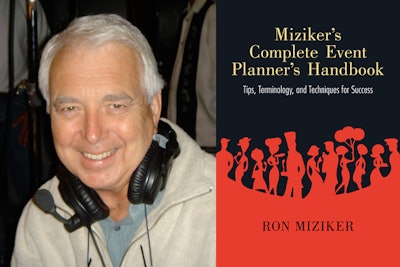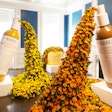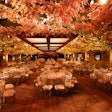
Award-winning director and producer Ron Miziker, who heads his own production company Miziker & Company in the Los Angeles area, says he had been bored with many events he had attended, so he decided to write, what he hopes to become, the “Bible of the industry” for event planners.
Aimed at professionals and beginners, Miziker's Complete Event Planner's Handbook: Tips, Terminology, and Techniques for Success (University of New Mexico Press) is a quick-reference guidebook for planning and executing events—big and small.
The book includes a glossary of terms from A to Z, along with helpful information (e.g. “Many states now forbid the outdoor releases of Mylar or foil helium balloons for environmental or safety reasons”), expert suggestions, and personal anecdotes. Plus, appendixes include charts, tables, and diagrams covering everything from flag protocol to trade show booth layouts.
In a type of choose-your-own-adventure format, the glossary guides readers through the planning process. For example, is a company hosting a cocktail party or reception? A reception is usually held before a larger event, and a party is, well, a party with cocktails. A checklist of tips, along with addendum information on food quantities, beverages, and room layouts, then follows the entry.
Miziker, who has worked for big-name clients such as Disney, Anheuser-Busch, and Pepsico and produced events including Ronald Reagan's presidential inauguration and Super Bowl halftime shows, believes an event is not just an event, but a show, with a performance and audience, and stresses that planners need to start thinking differently to make an event memorable. For example, a light is more than simply a light. “It can be used in a challenging way,” he says. Whether it’s to illuminate people or for theatrical effect, Miziker thinks lighting is the most important visual element of an event.
To that end, hologram and LED made it into the reference book. But technology might be moving too rapidly for the written word. “No sooner than I would incorporate it, it would change,” says Miziker, who has already started a list of new terms for the next edition.
In terms of planning, the author says that many professionals fall victim to simple mistakes like exposed power cables or crooked tablecloths. “I just went to this huge event in China. … They did an incredible job decorating, too incredible.” A huge floral piece was placed directly in front of the stage, obstructing the view of three-quarters of the room. “[Planners] don't make themselves aware. They think, ‘Let's get it done,’ and they miss the obvious.”
To avoid such pitfalls, Miziker says he always follows one rule: “You plan for 125 percent but hope to get 85 percent.”



















